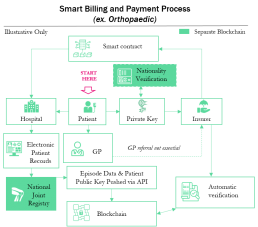How to leverage your workforce
In his latest blog post, Rodrigo Quezada explores what business leaders can do to manage a workforce comprised of five generations.
Make your workforce your secret weapon
In the workplace, times they are still a’ changing… For businesses to remain prosperous they need to face a number of challenges, including how to leverage an inter-generational work force with different needs and motivations. In fact, today’s workplace can contain up to five generations: Traditionalists, Baby Boomers, Generation X, Millennials and Generation Z.
Business models are navigating disruptive technology and changing customer needs. In addition, companies across all industries need to be able to leverage their workforce to maintain their competitive edge. So, with such a diverse workforce that covers a wide range of generations, how can leaders keep their people engaged, productive and motivated? When designing organisation transformation programmes, these are the goals that I focus on. Whether the workforce is comprised of Traditionalists, Millennials, Gen X, Gen Z or all of the above, designing specific organisational structures to keep everybody working at their optimal levels in the workforce is key.
The generations redefining the workplace
Definitions of Millennials and Gen Zs, and the distinctions between them, vary according to the source. No matter the definition, these generations have transformed how people engage with work and communicate. This is influencing the way businesses must operate, now and in the future.
Characteristics of Millennials and Gen Zs
There are always be exceptions to the rule, but there are broadly a number of characteristics that define these generations:
-
- Experience over material– One study found that 78% of millennials would choose to spend money on a desirable experience or event over buying something desirable, and 55% of millennials say they’re spending more on events and live experiences than ever before. This affects the appeal of traditional perks offered by companies to their employees.
- Responsibility – Purpose is king and wider social value is becoming an increasingly important factor
- Digital – As ‘digital natives’, communication and consumer purchases are driven by digital devices and platforms
- Flexibility – Working 9-5 is no longer the way to make a living. Flexibility is increasingly important. As featured in a The New York Times article this week, “the rest of their lives happens on their phones, not tied to a certain place or time — why should work be any different?”
Enabling "Generation Go" to Stay
Millennials have been nicknamed “Generation Go”. To utilize their energy and commitment in the workforce, businesses need to provide flexibility and keep pace with them, or risk losing out on the very competitive edge that comes along with the innovation they bring. Traditionalists, Baby Boomers and Gen X leaders need to find a way to share their business knowledge with millennials. Currently, millennials are managing 65% of the work of others globally. If you haven’t focused on the retention of this generation, you could lose leverage. Studies have shown that millennials are more likely to change jobs due to the economy over previous generations.
The top reasons Millennials and Gen Z choose to leave a job is:
- Lack of shared purpose and connection to a bigger goal
- Minimum wage growth
- Lack of advancement opportunity
- Excessive hours
- A work environment that doesn’t foster teamwork
What business leaders can do
As a business leader, it’s important to understand the mentality of your workforce. This is increasingly complex due to the multiple generations. Some basic cultural elements will never change such as having decent morals and respect for your fellow employees, but truly understanding how different generations tick could be the driving force for a successful business. By the year 2025, it is predicted that 75% of the workforce will be comprised of Millennials and Gen Zs. Therefore business leaders must understand how to attract millennials, retain them, and maximize their job performance.
Importantly, business leaders must also know how to effectively create succession plans while maintaining a strong focus on execution and innovation, incorporating new generations like Millennials. Sharing skills between generations is key – adopting new ways of communicating while also passing down the critical business knowledge that has been accumulated throughout the organisation. For a successful workforce, leadership must excel in understanding their employees and how to leverage different types of knowledge to excel and lead in the market.
Communication is a two-way street
In my experience I have found that the most effective way for senior leadership teams to engage in this two-way channel is to create special spaces like buffer zones which include forums, channels, and programmes that consistently maintain an open communication kept alive and relevant on both ends. This, combined with the more classic approaches like Leadership Development Programmes, and High Potential programmes give enough “credentials” for a programme to be taken seriously and succeed over time.
Key questions business leaders can ask about their culture
If companies want to become generational friendly and attract an elite and talented workforce to keep the company progressive and lucrative, it may be time to make some changes.
- Does your company have a clear and shared purpose? Statistics now show employees perform better when they feel a connection to peers and management towards something bigger than just profits and business results
- Is your company culture rigid or flexible? Foster a community-type atmosphere. Get rid of the top-down management structure and replace it with a more lateral management approach with tons of open communication.
- Does your company still require formal business wear every day? Change to a more casual dress code, dress down.
- Are your incentive and compensation schemes effective? Start offering perks that go beyond cash bonuses that studies show are so easily forgotten. Instead, offer company vacations as incentives.
Enabling each employee to share their skills with the wider team, regardless of generation, is key. With the tremendous amount of knowledge and experience older generations have, offering apprentice and mentorship programmes are a great way to make the top and bottom of organisations closer and close the gap that may exist between different approaches. It is one of the best ways for business leaders to engage new generations and identify new business opportunities for the long term growth and path of an organisation.
Learn to leverage your workforce, and make it your secret weapon.
About the author

Rodrigo Quezada
Rodrigo is a strategy and operations Managing Consultant designing and leading business transformation projects
CONTACT US TO FIND OUT HOW WE CAN HELP
Blockchain in healthcare: a use case
Curzon Healthcare lead Chetan Trivedi explores how Blockchain in healthcare will revolutionise the billing and payment process. This will result in the complete disintermediation of a vast administrative layer within the healthcare Provider and Payer (private insurer or public commissioner) organisation.
Consequently, Healthcare Providers and Payers will see a huge benefit through a more streamlined process of handling claims and processing payments. The process will also include various steps like checking patient insurance eligibility and coding claims.
Illustrative smart billing and payment process
The example shown below is based on an insured patient, but the process would be similar for the public sector.
1. Upfront
- Insurer and Provider enter into a Smart Contract on Ethereum blockchain
- The smart contract would be self-executing with the terms of the agreement directly written into code
- The smart contract would exist on a distributed and decentralised blockchain network
- Smart contract would permit trusted transactions and agreements to be carried out between Insurer and Provider without the need for manual intervention (Provider and Insurer), central authority, legal system, or external enforcement mechanism
- Each transaction would be completely traceable, transparent, and irreversible
- Automated invoice and subsequent payment would be triggered (i.e. self-billing) inline with pre-agreed protocols and care pathway (incorporated into the Smart Contract)
- Micropayments are triggered after each care package has been completed
- Penalties are built into the Smart Contract and are assessed automatically if Provider fails to meet quality metrics (e.g. readmission rates, infection rates, revision rates, etc.) or poor outcomes (e.g. PROM, Oxford scores)


2. Ongoing
- Patient experiences symptoms (e.g. increase pain, reduce mobility etc.)
- Patient visits GP (Physician) or contacts Insurer directly (based on policy guidelines)
- Patient accesses Insurer policy automatically using Private Key
- Insurer automatically routes referral to Orthopaedic Consultant or Provider inline with policy
- Patient commences journey through care pathway (e.g. pre-op, op, post-op, discharge, follow up, etc.) and is treated by the Provider against a pre-agreed set of protocols (consultation, imaging, pathology, implant, physiotherapy, etc.) with the Insurer
- Provider feeds data into Electronic Patient Records (EPR). Standard data linked to specific non identifiable Patient Public Key and is published automatically onto the Blockchain via API
- Insurer automatically validates treatment against pre-agreed care pathway and protocols and automatically triggers payment (see Payment Triggers to left)
About the author

Chetan Trivedi
I lead Healthcare at Curzon Consulting.
For over 15 years I have supported Healthcare payers, providers and medical devices companies on strategy, operational improvement and digital transformation engagements across the UK, wider Europe, Middle East, US, India and Canada.
I am deeply passionate about improving health outcomes, safety and quality of life for patients.
CONTACT US TO FIND OUT HOW WE CAN HELP
Hospital at home: key considerations
Hospital-at-Home: an Important Component of an Integrated Care Model
New technology is arming and enabling care providers with the ability to provide seamless support to patients along the entire care continuum. Hospital-at-home care delivery models allow health systems to find the right access and intervention point for delivering targeted patient solutions
The case for change
- Unprecedented levels of total global debt to economic output (debt-to-gdp ratio) during peace time. Simply printing more money, creating more debt or throwing more money at an outdated healthcare system isn’t going to help*
- Aging population with multiple comorbidities are requiring more complex care, so patients needs to be better triaged and stratified to determine best intervention point (hospital, community, home, etc.)
- Increase in prevalence of long term chronic conditions such as hypertension, type 2 diabetes, etc. are better suited to alternative care models (e.g. community, home, etc.)
- Overcrowding of hospitals and emergency departments by patients who can been seen outside of the acute setting are causing delays for patients with higher levels of acuity to be seen earlier
- Rapid advancements in telehealth and patient remote monitoring technologies are allowing clinicians to observe and examine patients remotely, and at scale, allowing care providers to do more with less
- Consumer expectations are rapidly increasing as they demand better care experiences and improvement in quality of life
- Pressure from payers to develop high quality, less-expensive alternatives to hospital care
7 key considerations for a Hospital-at-Home Model
- Establish clear objectives of why your organisation is seeking to set up a hospital-at-home model. For example, is it to drive early discharge, optimise admission avoidance, diversify income stream, etc.
- Identify conditions e.g. congestive heart failure, chronic obstructive pulmonary disease, community acquired pneumonia, etc. suitable for home care delivery models based on clinical evidence. Establish patient qualification criteria for hospital-at-home programme.
- Assess patient suitability (against qualification criteria), including functional risk assessment for hospital-at-home care model. Assess patient home for safety / hazards, heating, etc.
- Develop a personalised care plan upon first care provider visit. Personalised patient care plan can be developed by a doctor, pharmacist or nurse (the latter two under the supervision of a doctor using a telehealth solution if needed).
- Engage with patients and caregivers (family members or friends). Ensure anyone supporting the patient at home is part of development of the care plan. Where appropriate, self management (with clinical support) of treatment /condition must be discussed and agreed with patient.
- Prepare patient transition from hospital-at-home programme to primary care setting. Send discharge summaries to the patient’s primary care doctor via electronic patient records system, email, etc. The transition is absolutely key and must be handled flawlessly to avoid patient “falling through cracks”.
- Monitor and provide 24/7 coverage should patient require readmission. Provide in-home diagnostic tests, medications, and equipment (if necessary). Engage with care providers in wider community as needed (e.g. palliative care services, mental health).

*Global debt has reached an all-time high of $184 trillion in nominal terms, the equivalent of 225 percent of GDP in 2017. On average, the world’s debt now exceeds $86,000 in per capita terms, which is more than 2½ times the average income per-capita. Source: International Monetary Fund (IMF), Jan ‘19
About the author

Chetan Trivedi
I lead Healthcare at Curzon Consulting.
For over 15 years I have supported Healthcare payers, providers and medical devices companies on strategy, operational improvement and digital transformation engagements across the UK, wider Europe, Middle East, US, India and Canada.
I am deeply passionate about improving health outcomes, safety and quality of life for patients.
CONTACT US TO FIND OUT HOW WE CAN HELP
Driving performance in public sector infrastructure
Nigel Brannan highlights the importance of mastering the basics for a performance focused infrastructure organisation.
The performance challenge
Public sector organisations have long recognised the need to be more outcome and performance focused. While signalling the right intent, many struggle to translate desired outcomes into tangible outputs from their employees and suppliers.
A general ethos of reducing cost above all else compounds this challenge. Furthermore, the organisations often outsource the problem to a supply chain that is increasingly fragmented and under pressure to bid for contracts at very low margins. Suppliers then hope to make money from variations to the original contract that either were not or could not be specified up front, often taking advantage of their client’s poor planning, organisation or decision making.
The supply chain
Partnerships and collaborations are often touted as mechanisms for delivery assurance and improved performance but there are still significant inconsistencies in their effectiveness and practicality. The biggest challenge is usually to align organisations around incentives, which often involves increasing risk in exchange for higher profit, and ensuring that all parties are focused and organised around a common outcome. This is easier said than done.
For major, complex infrastructure projects, it extends beyond the physical construction effort to incorporate the planning and design phases. The public and political outcry at the spiralling cost of many high-profile programmes, or fear that they will overspend significantly, comes from a perceived inability to nail critical decisions, and plan and design in a reasonable timeframe. There are many political reasons why the champions of HS2, Hinckley Point C and Heathrow’s third runway continue to say those projects will deliver for the quoted costs, but the odds are that they will not.
The role of innovation
Innovation and digitisation play important roles in improving the performance of infrastructure organisations. Much of our work involves implementing innovation and digital strategies, but we do it through the lens of following the money. That means mastering the basics of productivity and performance, which starts with knowing what your core success measures are and how you are performing. In infrastructure delivery, you need right to left planning. This means working backwards from the answer on what needs to be in place and by when to hit key milestones and performance outcomes.
The move towards a performance management culture
Curzon & Company is currently partnering with a major public sector infrastructure client to move the organisation towards a performance management culture.
There are three stages in addressing the performance challenge –
Scan, Focus and Act:
- Scan establishes the baseline, trajectory and key drivers of performance. One critical output is a single version of the truth across scope, activity, cost and risk
- Focus is about prioritisation and channelling effort to where it has most impact. Major wins often come from an emphasis on looking forwards and addressing future risks rather than reporting historical performance.
- Act means actually doing things differently. It involves engaging the organisation and their partners at programme and project level to adopt new ways of working. Common measures, good information and ‘heartbeat’ disciplines get results.
None of this is rocket science, but it is remarkable how many organisations struggle to put it into practice.
The benefits
Our client now has transparency of previously hidden efficiencies, providing them and their regulator with the confidence that they are meeting their commitments. They can manage the affordability of the programme proactively – a key benefit where scope requirements evolve over time.
They are offsetting build cost risks by focusing on high-cost elements with standardised product design and productivity benchmarks. Most importantly, they are deploying tools and disciplines at project site level where success (or failure) is delivered.
The successful partnership between the client team and Curzon continues, helping to strengthen the foundations as the client migrates towards a new operating model.

This article originally featured in Raconteur, March 2019
About the author

Nigel Brannan
I lead Infrastructure at Curzon Consulting
I've over 30 years of consulting experience leading major transformation programmes and strategy assignments with major utilities, transport and civil engineering organisations.
CONTACT US TO FIND OUT HOW WE CAN HELP
Digital innovation empowers water companies
In an article published in The Times Raconteur, Edem Eno-Amooquaye discusses how digital innovation is empowering water companies to be more proactive, strategic and efficient in how they deal with property developments.
This article is based on a project with Anglian Water that has had a dramatic impact on customer service and efficiency in Developer Services.
Water companies are looking to harness emerging automation technology and smart data to transform their services. Often this requires a new way of working, closely focused on defined business outcomes, effective digital innovation and proper collaboration.
Among them is Anglian Water, which has established close working relationships with a small group of expert companies to digitally transform its developer services business. This transformation will deliver process efficiencies and more than £20 million of savings over the next five years.
Ian Amis, Head of Developer Services at Anglian Water explains:
“Historically, our customers would come to us and say ‘we have a development and we need water infrastructure’ and then we would come up with a solution. With our project we will have visibility much earlier, when engaging with property developers is still just a thought for landowners wanting to sell, enabling us to be more proactive, strategic and efficient”
The systems fully digitise the application process, planning and asset delivery. They also provide advanced geospatial capabilities that include drawing polygons for developer services applications – the first such programme in a UK water utility – and offer automated workflow management. In contrast, many other utilities only digitise or outsource application submission and assessment, and some have no digital capability at all in their developer services businesses.
The success of the project in meeting measured strategic outcomes means its application has been carefully broadened. “We began with a focus on low-volume, high-complexity schemes, but realised these platforms will work for all our one-off customers, our builders and our big developers as well,” says Mr Amis. He describes the work as “totally transformational” because the water company is able to provide developers with much better experiences and is ready to meet the customer service requirements of Ofwat’s new AMP7 DMeX measure.
“Grosight and Inflow are equipping Anglian Water with the capability to take a strategic approach to asset planning across the entirety of a water resource zone and recycling catchment area, reducing design costs by identifying site clusters and efficient solutions,”
explains Curzon managing consultant Edem Eno-Amooquaye.
Better site visibility provides greater insight on the needs of property developers, enabling sustainability initiatives such as water reuse to be encouraged and cutting the cost of late changes.
During the project, collaboration between business functions, IT and delivery teams has been essential. As guardian of the business case, Curzon Consulting has orchestrated this collaboration and taken responsibility for grounding all technical requirements and design functionality in the reality of business benefits.
“Curzon Consulting has led in defining the change management strategy to ensure the benefits of digitisation and new ways of working are embedded within the developer services business”
explains Edem.
This critical role has served to provide assurance to both Anglian Water and the IT team throughout the life cycle of the programme.
To make the relationship work between separate companies, in such a crucial commercial context for Anglian Water, all the parties have focused on growing together. The process has proved to be highly efficient and open, with the customer at its heart.
Our work with Anglian Water on digital innovation has won several awards such as Innovation Consultant of the Year and Most Innovative Cloud Product of the Year.

This article originally featured in Raconteur, September 2018
About the author

Want to find out more or meet one of our Infrastructure team? Contact us by email, phone or our web form.
Extracting value from data analytics in manufacturing
In an article published in Raconteur’s “Future of Manufacturing’, John Mason discusses how manufacturing firms have turned to data analytics and artificial intelligence and asks how many are failing to reap the rewards. What is needed is a sharper business focus to achieve expected returns.
Aside from the high-tech and leading corporates, adoption of digital technologies in the manufacturing sector remains subdued, a consequence perhaps of not seeing widespread evidence of the tangible benefits. Achieving expected returns on investment from advanced analytics and AI is less a question of technology and more a business challenge.
Success stories among early adopters are well publicised and demonstrate the advantages to be gained when the power of data from multiple sources is harnessed through expert hands and into business execution.
More precision in research and development reduces costs and increases success, product lead times can be compressed, sales and service are optimised for overall value, goods can become services, supply chain efficiencies are maximised, defects are reduced and production assets can operate at their potential.
For many though, there are “missing links” that are preventing the expected value being realised from the potential a wealth of data, analytical skills and technology are offering.
Clarity of business priorities is the starting point and that requires executive level direction. Technology has provided the toolkit, but how it should be used to best effect cannot be delegated to the IT function. The increasing presence of chief digital officers on executive teams is one trend bridging the gap between the business agenda and the role of technology.
“Generating business insight is a critical business capability that unlocks new value yet sometimes seems to be forgotten among the increasing volume of information and analysis,” explains John Mason.
Advanced analytics enable businesses to combine multiple datasets to highlight new information. The same cross-functional thinking is required in the application of this information.
For example, optimising asset performance will require co-ordinated action across production, engineering, maintenance and third-party equipment suppliers to achieve the potential performance uplift that connectivity and predictive analytics can offer. Most importantly, the business and IT functions need to work much more closely, and find a common language.
Risks associated with data security are often cited as a brake on adoption. Having a robust governance framework that defines who owns what information and how it should be used is essential.
50%
initiatives don't deliver their cost of capital
67%
companies reported human and technical capabilities as a bottleneck
Arguably the least considered aspect of a technology-led investment in data and analytics is the practicality of turning insights into measurable results. Success requires organisations to have the capabilities to act on and implement changes. The ability to test, learn, adapt and adopt is needed at all levels, and information needs to be made available to those who are going to use it in a way that is practical. Implementing minimum viable products and adopting “fast-fail” approaches that can quickly demonstrate impact are not widely established practices in many organisations.
Operating models and processes need to be capable of accommodating evolving knowledge, and the perceived threat that time-served, experienced staff may feel need to be overcome. “The expectation that the whole organisation will automatically see the benefits is likely to be unfulfilled. Involvement and ownership are key, as they are for any sustainable business change to work,” says Mr Mason.
When the links are forged for businesses to generate genuine commercial insight and swiftly translate it into action, the potential advantage of analytics will be fully realised.

This article originally featured in Raconteur, August 2018
About the author

John Mason
I lead our Manufacturing practice helping clients tackle complex business challenges to achieve a step-change in outcomes, whether it be re-shaping for growth, accelerating performance improvement, or leveraging the possibilities offered by digital and automation technologies in a time of rapid evolution.
CONTACT US TO FIND OUT HOW WE CAN HELP
Infrastructure: back to the old Benchmarks?
Edem Eno-Amooquaye discusses why the Infrastructure & Utilities sectors should refer to established Manufacturing practices as benchmarks for approaches to optimise both productivity and capacity.
Evolving approaches, same issues?
The Infrastructure & Utilities sectors have moved on significantly from an era when Six Sigma and adopting the productivity improvement methodologies of organisations such as Motorola and GE signalled the leading edge of business change.
Infrastructure & Utilities organisations have evolved in the industries and approaches that they look to as benchmarks. In an environment that demands customer centricity, competition, digitisation and advanced capacity management, infrastructure owners now model their aspirations on phenomena such as the dynamic slot control methods of airlines and the real-time data management of logistics companies.
Questions arise when we consider whether the modern challenges being faced by the sectors are being framed in accordance with the solutions that we aspire to offer rather than there being a suitable acknowledgment of the boring facts. These facts are that along with the new challenges, the age-old issue of how to improve productivity remains. Organisations are ‘going digital’ in line with industry trends and customer user experience expectations but have not necessarily gained full control of the basics. In the UK for example, the economy has been shackled by consistently low productivity since the financial crisis and a significant shortfall to productivity levels on par with the other European G7 nations (France, Germany and Italy) has long been maintained. The reason for this shortfall is a source of ongoing debate but the optimum balance between factors that influence productivity such as process efficiency, labour practices, regulation and technology adoption is one that the UK’s G7 counterparts have come a lot closer to achieving.
Out with the new and in with the old?
It would be too simplistic a next-step to infer that these age-old issues can be addressed by the age-old solutions, but this does not mean that the basics should be neglected. Perhaps the Infrastructure and Utilities sectors should consider reverting to a more traditional industry benchmarks source and its associated approach to productivity – Manufacturing.
Leading organisations look to continuously improve performance, driven by a philosophy that there is always hidden capacity or cash to be found by addressing the inefficiencies that have crept in over-time and become accepted. In a recent example of this Curzon Consulting looked at the fundamental components of availability, performance and quality to assess how Overall Equipment Effectiveness (OEE) can be adapted from its Manufacturing roots and used in the Water industry. This analysis identified considerable opportunities to increase OEE from today’s current levels and optimise capacity in waste water treatment businesses. Utilities companies have historically built waste water treatment plants in response to the need to deal with waste in specific locations but without a full strategic understanding of demand in an area, let alone a real concern for how to operate most efficiently or the potential for commercial opportunities. The application of OEE offers benefits to waste water treatment businesses that include reduced downtime and maintenance costs, better management of the equipment life cycle, labour efficiencies, increased productivity through improved visibility into operations, increased productivity by identifying bottlenecks, and, increased profitability. This time around, the application of OEE encourages Utilities organisations to look beyond straightforward process improvement to understand the impact that other functions are having on the ability of Operations or Capital Delivery teams to maximise their effective use of capacity. This should be considered within the context of a totex world for infrastructure and utilities organisations where end-2-end asset management, efficiency of decision making across lifecycle phases and relationships (often with alliance partners) between Engineering, Design, Operations, Project Management and Commercial functions are now paramount.
An even more provocative assertion from the Manufacturing industry acknowledges the competition driven and regulatory need for enhanced customer centricity but challenges whether businesses should pursue this at any cost. In a Manufacturing context this questions things such as excessive warehouse costs due to stockpiling of goods under the guise of mitigating against the risk of high demand products being unavailable but in fact being a buffer to mask ineffective supply chains. Parallels can be drawn with the digital platforms that many Utilities organisations are developing. The associated business cases promise the benefits of improved customer service performance against a backdrop of new metrics that will either incentivise or penalise companies, e.g. the Water industries new measure of developer experience (DMEX). These embrace the industry theme of digitisation but may retain inefficiencies as they build and hard code layers of old working habits and excessive touch point (process steps that would be labelled as ‘waste’ according to the age-old solutions). While the value of the human touch in customer interaction can never be underestimated the industry must be careful not to regress and allow productivity to be perceived as something that contradicts effective customer service. Further, digitisation is not an end in itself. Wasteful processes on digital platforms are still wasteful processes. Productivity improvements in the infrastructure asset lifecycle and the Lean design of associated system enabled processes should be considered as critical.
So, where to look for the good news?
Real encouragement and evidence of new direction is provided by Transport Infrastructure organisations. Whilst the European Railway with its objective of interoperability and technical compatibility of infrastructure and systems may appear to have struggled to make meaningful progress, key stakeholders in the Rail sector have observed the plans for intelligent supply chain networks and automation in the Manufacturing industry and realise that embracing the Industrial Internet of Things (IIoT) as the approach to technology driven change in a similar manner will be key to transforming the concept of a digital railway into reality. As timely evidence of this, Network Rail has recently announced its Digital Rail Strategy which is headlined by the commitment that all new trains and signalling will utilise advanced technology from 2019. Not to be left out, Utilities companies are also getting on to the front foot. Disparate remote asset monitoring technologies and business specific customer portals are now being firmly placed within strategies for full lifecycle digital asset data models, integrated systems and artificial intelligence led analytics. This demonstrates that the Manufacturing sector’s evolving approach to technology adoption, a key productivity driver, has remained as a crucial, actionable benchmark for the Infrastructure & Utilities sectors.
The infrastructure and utilities sectors must refer to established Manufacturing practices as they have in the past as benchmarks for approaches to optimise both productivity and capacity. In an exciting age of digitisation and customer centricity it will be important to maintain the necessary focus on the principles of productivity and operational effectiveness that underpin efficient business. In terms of the new industry challenges being addressed, rather than waiting to take instruction from the current Manufacturing practices being developed and established, the manner in which progressive Infrastructure & Utilities sector organisations are embracing IIoT and also seeking both inspiration and direction from various other industries indicates that in the not too distant future the sector may itself become a more strongly recognised source of benchmarks for digitisation, connectivity and other future ways of working.
CONTACT US TO FIND OUT HOW WE CAN HELP
New rules for insurance customer growth
Curzon Consulting Financial Services lead Doug Badham discusses the “New rules for customer growth” for insurance companies in an article for Raconteur.
New Rules for Customer Growth
The old norms of insurance cause a lot of customer pain: ever-rising premiums, slow and undifferentiated service, complex procedures and poor communications. But big changes are afoot. Insurance customers want better for less as rapid technology advancement continuously raises service expectations – and disruptive new entrants are riding the wave. Inward-looking insurers ignore this at their peril. Doug Badham said:
“We believe the industry has passed the point where it’s possible to grow profitably by sticking to the old rules,”
Successful net insurance customer growth now depends on embracing a new set of rules.
All customer contact is precious and should be as convenient as possible
Policyholders expect to be treated as valued customers, able to interact 24/7 across joined-up access points as they do in other sectors. Seamless access boosts retention and reduces overall cost to serve, and requires digital enablers to be at the heart of the insurer’s operating model.
“Insurers can no longer hide behind data security and Financial Conduct Authority (FCA) regulation as reasons not to allow multiple channel completion of processes,” says Mr Badham
The focus must be on retention from day one
Keeping customers is harder than ever: switching, reducing or dropping cover has been rising steadily due to household cost-cutting and self-researched offer-hopping, leaving some underinsured. Use of comparison sites also means consumers leave bigger data footprints, which ratchets up competitor targeting of renewal dates. To defend against this, care and consistency must be core to the entire customer journey. The jolt when a frictionless sales process gives way to a clunky claims procedure won’t be tolerated.
As Mr Badham explains: “Optimising claims experiences and making best use of technology to help customers minimise the cost of a claim, or not have to claim, is how retention battles will be won.” Take the LeakBot recently introduced to homecare cover, which alerts customers to first signs of a leak before worse damage ensues. Alongside claims experience, affordability is a prime reason for customer exit and another cornerstone of retention effectiveness will be the increasingly precise, personalised renewal pricing artificial intelligence can deliver.
Have more meaningful customer communication more of the time
Too often insurers’ attempts to communicate have an adverse rather than positive impact. Providers need to treat every customer touchpoint as an opportunity to demonstrate the value of their cover, particularly since April 2017’s FCA renewals regulation, which requires every renewal notice to encourage customers to shop around.
The best will use analytics to provide genuinely beneficial, timely insight that allows customers to understand and minimise their risk, for example: “You are regularly braking sharply and exceeding speed limits.” According to Mr Badham: “What’s happening in health insurance, where providers are transforming from benign payers to lifelong wellbeing partners, is likely to be followed in motor, home and other lines.”
Rebuild or build a brand based on trust and followership
Insurance has become something of a dirty word in recent years, with many incumbents losing customer trust. Restoring it is partly about making the move from a back-office-centric operating model to one that delivers digitally driven customer management and contact excellence. On top of this, compelling brand proof points are crucial to fend off powerful non-insurance brands that have taken a foothold, such as John Lewis, and to combat price erosion from online distribution challengers. It won’t be a case of outspending them. The insurers who cut through the noise of comparison tables and “expert” web articles will be those earning and sustaining customer advocacy through trusted recommender communities and app-based insurance aggregators such as Boughtbymany and Brolly.
There’s no hiding place from the disruption. Shedding the old rules and becoming a genuinely customer-driven insurer – in the customer’s eyes – is what it will take to thrive in the new environment.

This article originally featured in Raconteur, April 2018
About the author

Douglas Badham
I lead our Financial Services practice, supporting banking, insurance and wealth management clients at a time of enormous disruption and change in the industry.
CONTACT US TO FIND OUT HOW WE CAN HELP
Unlocking hidden capacity in manufacturing
Regardless of the scale or nature of your operations, hidden capacity in manufacturing can be found far more often than you might think.
Curzon Manufacturing sector lead John Mason explains key considerations for manufacturers.
In our experience, even operations that appear to be performing well are often far from efficient. In fact, these inefficiencies have crept in over-time and become accepted and invisible. Requests for more and more capital to deliver capacity increases. High levels of unproductive inventory are the common symptoms that executives see.
One of our clients, a world-leading glass product manufacturer, was suffering from low productivity at their largest European production site and increasing their stockholding to cover poor performance. We worked with them to maximise their production capacity, allowing them to service additional demand. As a result our client achieved a multi million pound increase in operating profit, while simultaneously reducing working capital by 35%.
What can you do to identify hidden manufacturing capacity and locked-up cash?
Challenge your operating envelope. Are plant and people operating together at their maximum, and how do you know? Improvements to equipment and ways of working will have been made over time but often there is no systematic capture and re-setting of new standards. Plate capacity is probably out of date.
Plan for success.
How much output is being lost through sub-optimal routing and low-efficiency changeovers; and are long production runs the best answer to avoid these losses? Has the best sequence been worked out to balance the need to meet customer demand and to minimise lost productive time, and when the planning is right, how good is schedule adherence to the plan? Getting it wrong will hit capacity or tie up cash in excess inventories. Or probably both.
Measures matter. Plants that appear to be performing well might not be. Have you got a handle on true performance with consistently applied definitions and accurate reporting? Are you incentivising the wrong behaviours through driving cost recovery? Carrying high levels of the wrong inventory is often an unwanted consequence of an unmanaged drive for lower unit cost.
Manufacturing is a science, not an art.
Are processes under control? How quickly and routinely does a plant establish maximum throughput of quality product at start-up, and does it stay there? To what extent is there acceptance of variability and reliance on experience and judgement to ‘coax’ the process rather than repeatable and reliable operations? For instance, focusing on Overall Equipment Effectiveness (OEE) to achieve a 2% increase in capacity on a continuous chemical products plant returned a multi-£m profitability uplift.
Eliminate non-productive time.
What is dictating throughput rate? A precision engineering client was achieving just 3% velocity through their process; a huge opportunity to compress cycle times and slash work-in-progress inventories. Are improvement efforts focusing too much on increasing the output of a single stage or machine rather than looking at the system as a whole? We helped another client to halve the throughput time of their precious metals processing activities by eliminating built-in wait time between stages and achieve a 12% increase in their return on assets.
Don’t overlook maintenance.
A plant that isn’t running is lost capacity and poor maintenance operations are often a cause. How effectively are you organising, skilling and utilising all your resources to look after your assets? Having your operators carry out standard routines for example will improve reliability and free up engineer time. Have you got the right asset strategies, information and service provision to maintain plant availability in the most cost-effective way?
Empower your team.
Manufacturing companies are reliant on front line staff for day-to-day efficient use of scarce resources. How well do your people see the opportunities to improve, how equipped are they to unlock the potential and how appropriately are they recognised for their efforts? These questions are not for Human Resources to answer. One of the biggest levers you can pull is effective engagement and development of your operational staff.
Unlocking additional capacity in manufacturing to create value isn’t just the job of Operations:
Look beyond the factory floor. What impact are other functions having on the ability of Operations to maximise their effective use of capacity? How much stoppage, rework and yield loss is as a consequence of the extended value chain? How effective are the interfaces and relationships between Operations, R&D, Engineering, and Commercial functions? We discovered with a capital equipment engineering firm that the root cause of poor performance and lost capacity in the factory stemmed from poor management in the Design Engineering function.
Customer first, but not at any cost.
Manufacturing companies’ sales teams may want the warehouse full of stock to maintain the highest service levels. But what are customers actually prepared to pay for? Is the available capacity being used to generate the most profitable returns or to just build buffers to mask performance of an ineffective supply chain? Sometimes the results are surprising. One such review uncovered the value-destruction of actively migrating customers to a new, ‘better’ product… with a lower margin.
More capital spending isn’t always the answer.
Often the accepted wisdom is that capital is needed to create additional capacity. Have all the alternatives been looked at before committing? How far can improved leadership and good practice operating disciplines take you first? We helped a specialty chemicals producer avoid a multi-million and multi-year plant build when the capacity already existed to meet their needs by optimising the product mix and de-bottlenecking the plant.
About the author
Get in touch to find out how we can help unlock capacity in manufacturing companies.
CONTACT US TO FIND OUT HOW WE CAN HELP
Innovation and sustainability in the UK water industry
Edem Eno-Amooquaye shares his thoughts on why the UK water industry might be missing the point when it comes to innovation and sustainability.
One of the world’s major cities, Cape Town, is expected to run out of water by April…
The usage demands of a growing population, compounded by several years of extremely low rainfall that led to regional drought, have caused this crisis. The local government has responded by determining a daily allocation for water users in order to bring down consumption. In addition, urgent investment is being made in desalination plants, groundwater collection projects, and water recycling programmes.
This is not an isolated incident, and it will not be the last one to affect a major city. We are facing a global water sustainability challenge: 97% of the world’s water is saltwater and understood to be unfit for human consumption, agriculture or industrial use. Of the remaining 3%, only about 1% is readily available for human consumption. This 1% is expected to become increasingly scarce and the global imbalance between supply and demand is forecast to become significantly worse.
This raises an important question about the feasibility of wholesale water being traded as a commodity on a global level. At present, the supply, regulation and ownership of water is understood to be a local issue and many would argue strongly that it should remain as such. CNBC Markets Editor Patti Domm noted in a 2014 article, Why trading water futures could be in our future, that
“history is full of examples where water diversion led to wars or environmental tragedies.”
However, with an abundance of research and commentary being amassed on the subject of water sustainability, there is now wide acknowledgement of the need for innovative solutions to enable the wholesale global management of water. Arguably, this is a focus driven by regions such as the Western United States, India, The Middle East and Sub-Saharan Africa that are confronted with water scarcity issues of a severity that the UK is yet to experience. Regardless, this does not mean that the UK can merely pay lip service to the global challenge or that its management of local water shortage challenges will not need to evolve. It was only a few years ago that Eastern Brazil suffered a major drought and in this case it was the slow response of government that was largely blamed for the water supply crisis and resulting social, economic and political disruption. Lessons on the need to proactively address water sustainability are not being learned. The images of mass demonstrations in Sao Paulo have clearly been forgotten. More recently, and closer to home, what should perhaps resonate more strongly is the ongoing drought affecting Portugal and much of Spain, largely due to three years of low rainfall, where the latter half of 2017 saw rivers come close to running dry. The impact on agriculture has been devastating. Reservoir levels are running dangerously low and clean water now has to be delivered by tanker to many rural communities.
We need to question whether the UK has really grasped the concept of global sustainability and its future role within the wider industry
For the UK, achieving sustainability in the water industry means addressing both current and future challenges, which are both broad and varied in their nature; from meeting the clean water needs of new developments, to managing the uncertainty caused by climate change, addressing requirements for the maintenance and renewal of ageing mains infrastructure, achieving targets to reduce energy usage and improving customer satisfaction.
Whilst we can trust that, as an industry, we have not totally overlooked or forgotten the fundamental challenge of sustainability, there does seem to be a significant disconnect at the moment between the global or holistic view and the UK industry’s latest ‘hot topic.’
Why is retail innovation being touted as the answer to all of the UK water industry’s problems?
Changes to the UK water market mean that most organisations can now choose the company that they want to supply their water retail service. This represents what the regulator describes as “the largest competitive water retail market in the world having opened for business”.
In response to this increased competition, and perhaps compelled by the fear of value chain and organisational evolution, the UK water industry appears to have become heavily focused on retail innovation. But is this really the answer to all of its challenges?
Industry forums are directly referring to the adoption of futuristic, leading edge retail models as the solution to the industry’s sustainability challenge. Top online retailers such as Amazon, Apple and easyJet are being referenced as benchmarks for how the water industry needs to develop its customer experience and interaction. Adding confusion to the mix is the rebranding, selling-off and proposed disaggregation of the business retail arms of many water companies as they double-down and nestle in to the comfort blanket of wholesale services in order to reinforce their positions within an industry evolving at an uncomfortably fast pace.
The emerging consensus that retail innovation or mimicking the customer service model of online companies is the Holy Grail or missing piece of the puzzle for the water industry to overcome its sustainability challenge needs to be questioned. Huge changes will be required across all stages of the water value chain to effectively address sustainability. And right now, there’s certainly much less palpable excitement and fanfare around new methods of managing water resources or wholesale business transformation and resilience.
The risk is that the UK is separating itself from the global water resources management challenge, where innovation is focused on water security and the management of water as a scarce global commodity.
Recent reports published by major infrastructure and asset management firms on the development of water utilities promote frameworks for creativity and innovation that, rightly, focus on developing new approaches to serving customers and managing assets. However, they only refer to sustainability as an ‘additional benefit’.
We must challenge the definition of sustainability and the stakeholders who are shaping these discussions in the UK. A choice must be made as to whether we want to seriously contribute to addressing sustainability of water as a global resource, or be limited to viewing sustainability from the medium term perspective of the current players in our local industry.
Arguably, it’s also questionable as to whether these players have really grasped the bigger picture. Maybe the ever-increasing thoroughness of the regulator’s incentivisation and performance management of improvements in customer service and satisfaction metrics have disproportionately skewed the agenda towards retail and customer service.
Or perhaps the UK players deserve more credit. They do have a bit more in their sights than just retail innovation. Ofwat’s PR19 suitably focuses on building resilience and defines the avoidance of dependency on single assets as key to the long-term provision of water services, as well as the ability to adapt and recover from disruptive events. So there are allusions, even if indirect and aided by interpretive leaps, to the need to extend beyond local assets and boundaries in order to sustainably manage demand and supply.
Added to this, some clear steps have been taken. Although research documents and consultations are yet to spawn innovative transformational plans, since its 2011 Water for life white paper the UK government has acknowledged the need for advancements in water abstraction to create a more dynamic system for effective sharing of water resources. In A Green Future: Our 25 Year Plan to Improve the Environment, published at the start of 2018, the government encourages innovation and looks to formalise plans around improving access to water to encourage trading and storage, the growth and implementation of robust long-term plans that develop new water resources where needed, and reforming approaches to water abstraction. Water re-use and alternative water solutions are also being actively promoted and pursued by companies such as Anglian Water, which demonstrates recognition of how exploiting the multiple uses of water is one of the best ways to maximise sustainability.
Most notably, in 2010, Thames Water opened the UK’s first major desalination plant, the Thames Gateway Water Treatment Works, and heralded a step change in technological innovation and drinkable water yield from desalination. However, investment is yet to gather real pace across the rest of the industry. In line with predictions that we will see the number of desalination plants across the world double by 2050, The Institute of Chemical Engineers has set the expectation that the UK will pioneer this revolution in global water management with an additional three major desalination plants and up to 800 smaller units. It will be important for the UK industry to collectively focus on sustainability and water management in order to reassert itself as a world leader in this area.
What's next for the UK water industry?
As is the case for retail innovation, the UK water industry must aim to be at the leading edge of sustainability and implementing water management solutions such as desalination and new technical and commercial solutions for treating and recycling water produced by industrial activity.
The next step must be for the UK water industry to globalise its ambitions, plans and particularly its actions. We need to acknowledge that whilst water sustainability may appear to be just a local challenge, it is a significant issue for which the solutions must extend across local, regional and national boundaries. Perhaps, some of the noise and energy around the UK ‘topic of the moment’, retail innovation, would be better directed towards this cause. The vision and initiatives promoted by organisations such as the World Water Council would be an appropriate reference point.
About the author

Nothing found.












